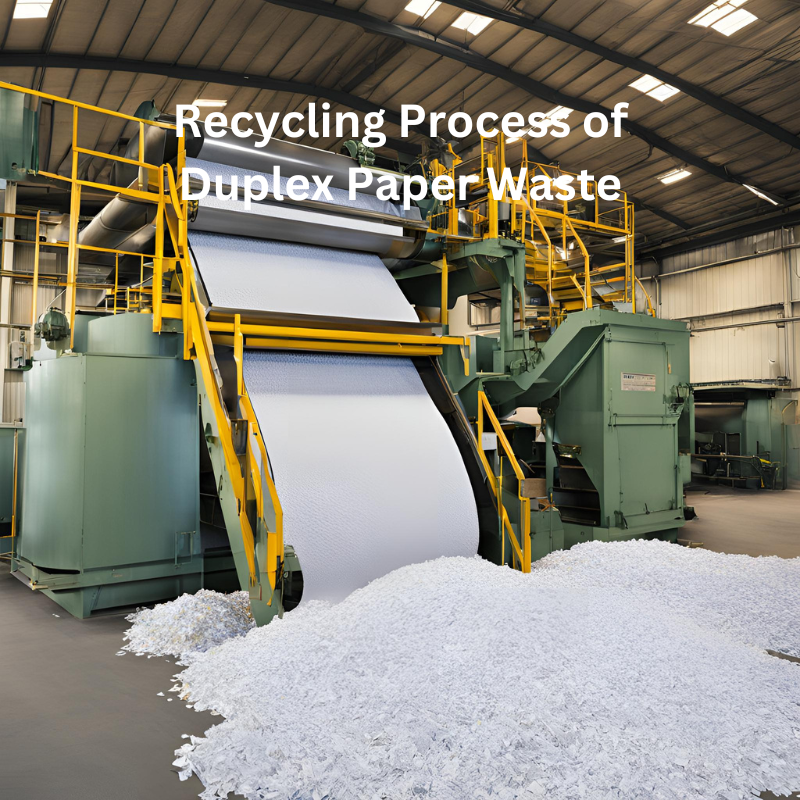Recycling Process of Duplex Paper Waste: Turning Waste into Resource

The process of waste duplex paper recycling is essential for environmental sustainability and resource conservation. Duplex paper board, also known as double-sided paperboard, is widely used in packaging, printing, and various other applications. Recycling waste duplex paper is crucial for reducing the strain on natural resources and minimizing the environmental impact of paper production.
The first step in the recycling process involves collecting waste duplex paper from various sources such as offices, industries, households, and commercial establishments. This collected waste paper is then sorted and segregated based on its quality and type. It is essential to eliminate any contaminants such as plastic, metals, or other non-paper materials from the waste paper to ensure the quality of the recycled product.
Once the waste duplex paper is sorted, it undergoes a process of pulping, where it is mixed with water and chemicals to break down the paper fibers and form a pulp. The pulp is then cleaned to remove inks, coatings, and other impurities. This cleaning process is crucial in ensuring that the recycled paper maintains high quality and can be used in various applications.
After cleaning, the pulp goes through a series of refining and screening processes to remove any remaining contaminants and to improve the quality and strength of the paper fibers. The refined pulp is then mixed with fresh wood fibers to achieve the desired characteristics and strength for the recycled paperboard.
The next step involves the actual papermaking process, where the pulp mixture is spread onto a moving mesh screen to form a thin layer of fibers. As the water drains away, the fibers bond together to form a sheet of paper. This newly formed paper sheet goes through pressing and drying stages to remove excess water and to give it the required thickness and smoothness.
The final product of the recycling process is a high-quality duplex paper board that can be used for various purposes such as packaging, printing, and manufacturing. The recycled duplex paper board exhibits similar properties to virgin paper board and meets industry standards for strength, durability, and printability.
Recycling waste duplex paper offers several environmental benefits. It reduces the demand for fresh wood fibers, thereby conserving forests and biodiversity. Additionally, it minimizes energy consumption and greenhouse gas emissions associated with paper production. Furthermore, recycling paper helps in diverting significant amounts of waste from landfills, reducing the pressure on waste management systems.
The process of waste duplex paper recycling plays a crucial role in promoting environmental sustainability and resource conservation. By following the steps of collection, sorting, pulping, cleaning, refining, and papermaking, waste duplex paper can be effectively recycled into high-quality paperboard, contributing to the circular economy and reducing the environmental impact of paper production. It is important for industries, businesses, and individuals to actively participate in the recycling of waste paper to support a greener and more sustainable future.

